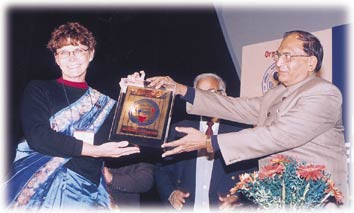 |
 Only
a few years ago, emergency contraception (EC) was virtually unknown in most countries
of the world. The development of improved methods has contributed to the increase
in interest and EC is now becoming an important part of family planning services.
The speed with which emergency contraceptives have been approved by national authorities
demonstrates that there was, indeed, a need for back-up methods; in less than
three years emergency contraceptives have been registered in over 40 countries. Only
a few years ago, emergency contraception (EC) was virtually unknown in most countries
of the world. The development of improved methods has contributed to the increase
in interest and EC is now becoming an important part of family planning services.
The speed with which emergency contraceptives have been approved by national authorities
demonstrates that there was, indeed, a need for back-up methods; in less than
three years emergency contraceptives have been registered in over 40 countries.
EC
clearly fills the gap as the only contraceptive method that offers a ‘second
chance’ in the prevention of unwanted pregnancy when unprotected intercourse
has already taken place. EC is very valuable for women in need and thus should
be easily available. Whether the introduction of emergency contraception can have
an influence on abortion rates in a country will, however, depend on a number
of factors. In our enthusiasm about the potential of EC, we should not forget
that, in the prevention of unwanted pregnancy, it is the use of regular family
planning methods that plays the key role as the most effective means. The role
of EC is much more modest; it will contribute to that aim if it is used as a back-up,
not as a primary method. If EC starts replacing more effective contraceptives,
the situation may switch from bad to worse.  This
means that the way emergency contraceptives are introduced into family planning
services is crucial. The providers also face a challenge as to how best to bring
the correct information to users. Because emergency contraceptives are not as
effective as regular methods and as they do not protect from STIs like barrier
methods, ECs are best used for emergency only. In addition, repeated use of EC
causes cycle disturbance and exposes the woman to a higher amount of hormones
than the regular use of oral contraceptives. The few studies carried out on the
use of EC when it was easily available suggest that women do not misuse EC provided
they have received correct information. This
means that the way emergency contraceptives are introduced into family planning
services is crucial. The providers also face a challenge as to how best to bring
the correct information to users. Because emergency contraceptives are not as
effective as regular methods and as they do not protect from STIs like barrier
methods, ECs are best used for emergency only. In addition, repeated use of EC
causes cycle disturbance and exposes the woman to a higher amount of hormones
than the regular use of oral contraceptives. The few studies carried out on the
use of EC when it was easily available suggest that women do not misuse EC provided
they have received correct information.
It
seems to be worthwhile planning carefully for the introduction of these new methods
into family planning services, and, perhaps, proceed, step by step, to see the
reaction, rather than make mistakes which are difficult or impossible to correct
afterwards. At best, the introduction of EC will increase the use of regular contraception
among those who have not used any FP method. When this is the case, we can also
expect to see a decrease in abortion rates. Back
to Top
|  |  |